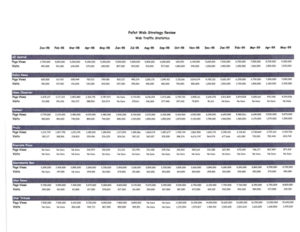In February 1999, I gave a speech at the 10th Annual Interactive Newspapers Conference in Atlanta. At that time, the newspaper industry was still clinging to its traditional revenue pillars—print circulation, display ads, and, most crucially, classifieds. However, to me, there was no doubt that those pillars were now built upon shifting sands.
I gave the speech in my role as Director of Technology and Information Strategies for Central Newspapers. I wanted to issue a warning that time was short to hope that changes were evolutionary not revolutionary. Looking back, I’m particularly proud that I said that the internet was a fundamentally a different medium, not an extension of an existing medium.
I asked Chat GPT to read the transcript of the speech and write a post. [The full transcript is available here.] This is what AI wrote:
Drawing from his experience launching online ventures like ArizonaCentral.com and HomeFair.com, Howard Finberg projected a not-so-distant future in which classifieds—the cash cow for local papers—would erode significantly. Industry research was already signaling a potential 7% loss in bottom-line revenue. “Look around the room,” Finberg said. “Seven percent of us won’t be here next year unless other things happen.”
What followed was a clear-eyed, sometimes humorous, always practical exploration of how newspapers needed to reinvent themselves—organizationally, culturally, and strategically—for the internet era.
A New Business, Not a New Department
Finberg’s core message was that digital wasn’t just an add-on. It was a fundamentally different medium with different economics, content, and user behavior. Drawing a comparison to how early television mimicked radio before finding its own identity, he urged media leaders to stop thinking of the web as an “extension of print.”
Instead, he proposed a hybrid model he called Integrated Independence. The idea was to combine centralized resources (like shared technology platforms and content services) with localized control. Local newsrooms would have the freedom to tailor digital strategies to their communities while benefiting from corporate-level efficiencies. “Nobody knows the local markets better than the local publishers,” Finberg reminded the audience.
Breaking the Assembly Line
Finberg also called for deep structural and cultural change within newsrooms. The traditional assembly-line workflow—where one department handed off content to another in rigid steps—wasn’t going to cut it. He advocated for flatter hierarchies, shared knowledge, and team-driven processes where journalists were empowered to collaborate, experiment, and respond to audience needs in real-time.
One visual metaphor stood out: the future journalist not as a solitary reporter with a notebook, but a nimble, multi-skilled “first-on-the-scene” storyteller—equipped with audio, video, and digital tools, capturing stories from the ground up.
Talent, Risk, and Retention
Finberg was equally blunt about the staffing crisis on the horizon. Starting salaries in journalism couldn’t compete with emerging web companies offering equity and entrepreneurial freedom. “We face a real brain drain,” he warned. His solution? Pay strategically for “Hot Jobs,” break HR molds when needed, and—most importantly—offer employees the chance to learn, move, and grow. “We (must) reward failure,” he said, “by not penalizing it—and by encouraging the next try.”
A Call to Look Beyond
Perhaps the most striking element of Finberg’s talk was his push for the industry to stop looking only inward. “We need to start attending conferences outside our field,” he said. “Broadcasting, cable, tech—we have to see what others are doing.” It was a call for curiosity, humility, and horizon scanning—a mindset that still resonates today.
More than two decades later, many of the ideas in this talk—content re-usability (“author once, publish many”), cross-platform journalism, digital-first thinking, and agile teams—have become core to modern media strategy. But in 1999, this was revolutionary thinking.
Finberg’s presentation wasn’t just a roadmap. It was a challenge. A reminder that digital disruption wasn’t just coming—it had already arrived.
